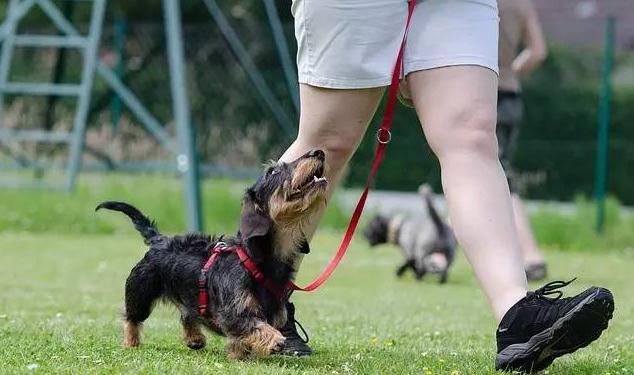The most common question we hear from pet owners is how to get their dog to stop a behavior they don’t like. Perhaps they want their dog to stop barking, their cat to stop spraying or peeing outside the litter box, their cat or dog to stop fighting or being destructive, or their dog to stop lunging and pulling on the leash or jumping at another dog.

When we want our pets to behave differently and focus on stopping a behavior, we are talking about repressing the behavior. If we only think about repressing the behavior, we are putting on very dangerous tinted glasses when we describe ways to change the behavior of our pets.
We’ve seen dogs treated extremely harshly by people in order to get them to stop a certain behavior, and did you know that? This type of approach sometimes succeeds in suppressing behaviors that the owner doesn’t like, though the dog is obviously scared half to death by the repressive experience.
For example, if a dog is pulled back hard by an 80 kg man with a leash and a ring spike collar, the dog will soon learn to be quite afraid of being pulled by the leash and reach a repressed behavior.
Is that really our only goal? Let’s look at what else can happen. When pulled hard enough, a ring spike collar can cause pain and therefore suppress jumping and dragging on the leash; ask any veterinary professional what a dog is likely to do when they feel pain. They will bite.
We had a case of a Doberman Pinscher who exhibited aggressive behavior towards other dogs on walks, barked and growled, and even tried to bite his owner on one occasion when he saw another dog approaching. His behavioral history showed that a few weeks prior to his aggressive behavior, his owner started using a spike collar to stop his aggression, which stopped the aggressive behavior, but it also triggered the aggressive response. We switched him to a headcollar, and with a counter-conditioning training program, the aggression disappeared.

The second question we need to ask ourselves is, what is the dog’s behavior or its “body language” after the repressed behavior occurs? Is he relaxed and happy when walking with his owner, wagging his tail, ears perked up, obviously enjoying the walk? Or is it tense and anxious, panting and overly alert, fearing that something bad will happen if it makes another mistake?
At least two recent studies have shown that most pet owners cannot see their dog’s urgency, anxiety or fear. In fact, most people notice the wrong dog body parts and are likely to confuse stress and anxiety for a “happy” emotional state.
The focus of this article is not on ring spike collars or storming, the message to bring you has a broader meaning.
When you set training goals or behavior change goals for your own pet, think about what you want him to do, not just what you don’t want him to do.
Instead of saying “How do I keep my dog from storming? I’d rather aim for “How do I get my dog to rarely pull on the leash and to relax and have fun walking beside me?
Instead of asking, “How do I get my cat to stop peeing on the carpet? Instead of asking, “How do I make a litter box that my cat will use?” This may require considering other questions as well: perhaps the cat doesn’t use the litter box because the other cat in the house bothers it, so the question becomes “How can I help my cat get along better? .
Your idea of what the goal is will influence the method you choose to use to achieve it. When we set training goals, we consider not only the behavior, but also the associated emotional state, and it is often the case that you can’t have one without the other. If we have a scared dog following its owner on a walk without pulling on the leash, something bad is going to happen someday.

